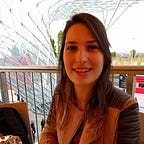5 Topics in the Same Theme
In this series, I will try to explain the 5 topics I chose about one specific theme. I will try to keep these explanations short. The theme in this article is “Design”.
1. Design & User
Design for the user, referring to the process where the designer interprets what the user wants.
Design with the user, where designers and users are engaged in permanent dialogue and feedback during the design process.
Design by the user, where the whole design process is carried out by the user, who is an expert in this subject, as in some very specialized sports devices and accessories.
2. The Pruitt-Igoe Housing Project
Pruitt-Igoe is a settlement completed in 1955 in St. Louis, Missouri. This settlement project was designed by Minoru Yamasaki. Minoru Yamasaki also designed the World Trade Center. This settlement project was named after Wendell O. Pruitt, an African-American fighter pilot who participated in World War II, and a former US congressman William L. Igoe. The Pruitt part of the settlement contains apartments for black people and the Igoe part for whites.
St. Louis, Missouri was one of the poorest areas at the time. In this settlement, there are 2.870 apartments in total. These apartments consist of 11 floors. The apartments are deliberately designed to be small. Elevators stand only on the first, fourth, seventh, and tenth floors and forced residents to use the stairs to avoid clutter. The same floors were equipped with large common corridors, laundry rooms, common rooms, and garbage chimneys. Ventilation was poor. As a result of these design decisions, stairways and corridors were very attractive to the robbers. Due to unhealthy living conditions and increasing crime rates in the region, this settlement was destroyed.
One of the most important reasons affecting the demolition decision was that the blocks created blind spots for them due to their positioning.
After months of preparations, the first building was detonated and destroyed at 3 am on March 16, 1972. The second was destroyed on April 22, 1972. As a result, in 1976 the area was completely cleared.
This building community was one of the first demolitions of modern architecture. Postmodern architectural historian Charles Jencks was evaluated this situation “day when modern architecture died”. This project is an icon of failure of urban renewal, public housing, and public-policy planning.
3. “Average Man” Fallacy
A very serious error in the application of data is to assume that the 50th percentile dimensions represent the measurements of an “average man” and to create a design to accommodate 50th percentile data. The fallacy in such an assumption is that by prior definition 50th percent of the group may suffer. There simply is no “average man”. Depending on the nature of the design problem, the design should usually be conceived to accommodate the 5th or the 95th percentile, so that the greatest portion of the population is served.
Therefore, the concept of the “average man” is fundamentally incorrect, because no such creature exists. Workplaces to be efficient should be designed according to the measured range of body size.
4.User-Centered Design
a. User-centered design is empirical. It seeks to base the decisions of the design process upon hard data concerning the physical and mental characteristic of human beings, their observed behaviour and their reported experiences.
b. User-centered design is iterative. It is a cyclic process in which a research phase of empirical studies is followed by a design phase, in which solutions are generated which can, in turn, be evaluated empirically.
c. User-centered design is participative. It seeks to enrol the end-user of the product as an active participant in the design process.
d. User-centred design is non-Procrustean. It deals people as they are rather than as they might be, it aims to fit the product to the user rather than vice versa.
e. User-centred design takes due account of human diversity. It aims to achieve the best possible match for the greatest possible number of people.
f. User-centred design takes due account of the user’s task. It recognised that the match between product and user is commonly task-specific.
g. User-centred design is system-oriented. It recognised that the interaction between product and user takes place in the context of a bigger socio-technical system, which in turn operates within the context of the economic and political system, environmental ecosystem, and so on.
h. User-centred design is pragmatic. It recognizes that there may be limits to what is reasonably practicable in any particular case and seeks to reach the best possible outcome within the constraints imposed by these limits.
5. Form-giving approaches: additive, integrative, and integral forms
Dieter Mankau’s formulation of the concepts is additive, integrative, and integral forms. The additive approach is a visible combination of different elements, while the integral one derives from the subtraction of the functions from the main figure, thus the integrative is the step in between. The additive approach relates to a more functionalist approach where the parts of an object with different functions are visible and clearly added one to another. In the integrative case, the product components are perceived as distinct but integrated. In the integral approach, a basic form predominates on the functions that are cut out from it.
